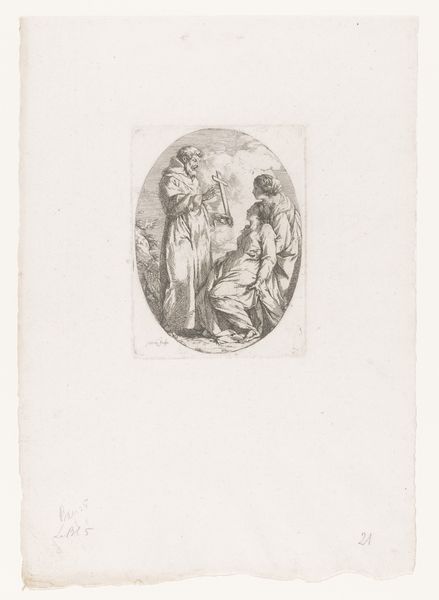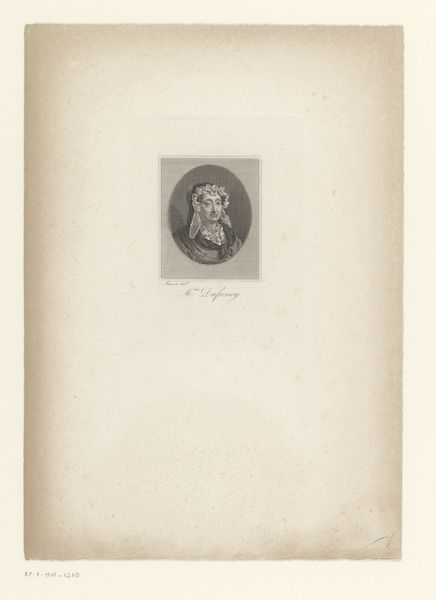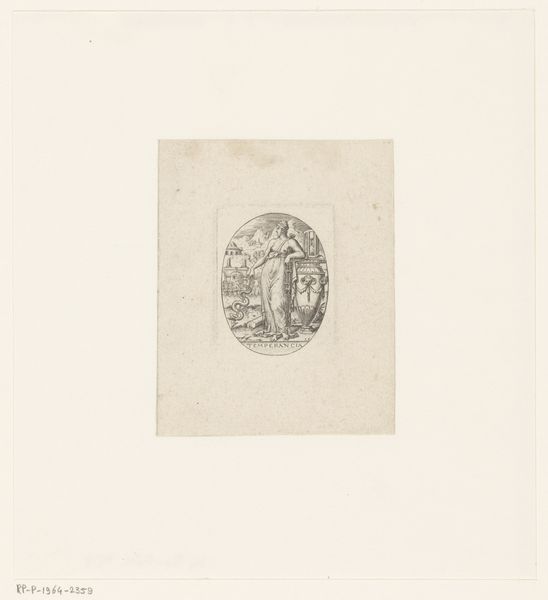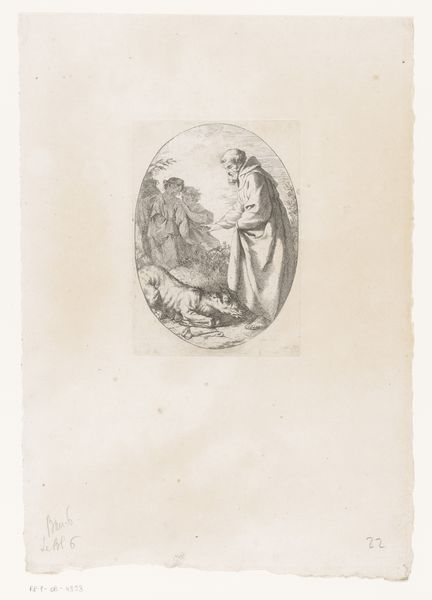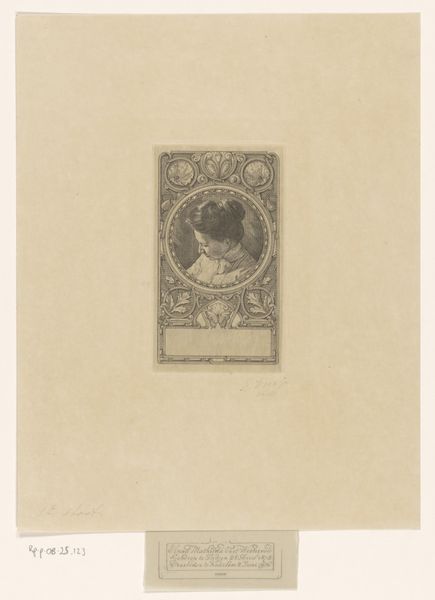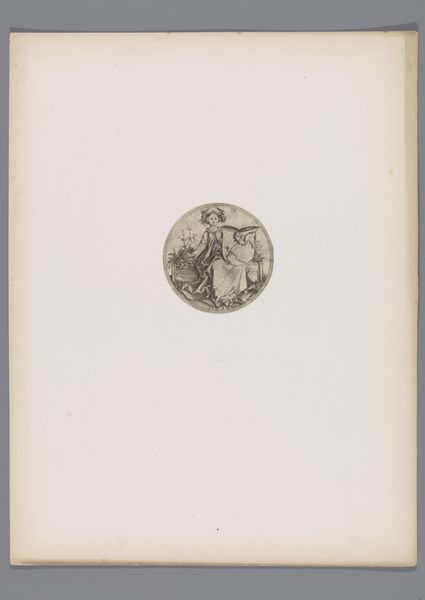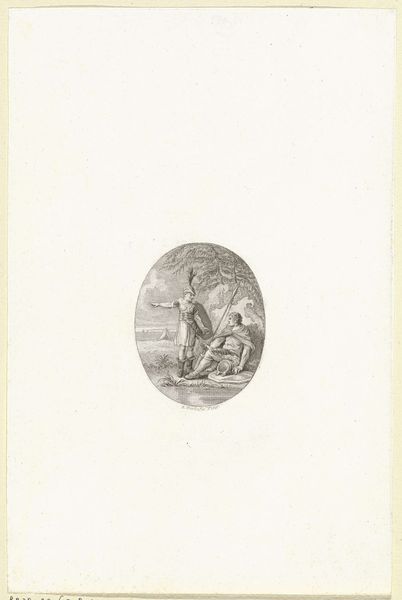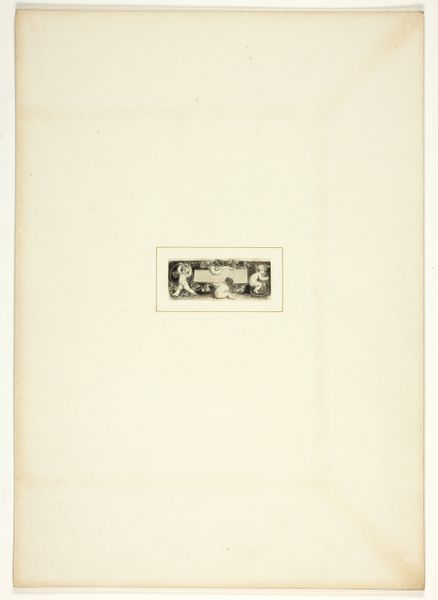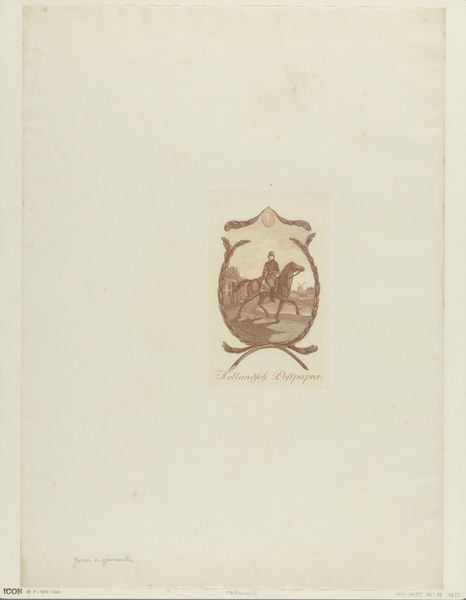
drawing, print, paper, ink, engraving
#
portrait
#
drawing
#
neoclacissism
# print
#
old engraving style
#
paper
#
ink
#
line
#
engraving
Dimensions: height 70 mm, width 60 mm
Copyright: Rijks Museum: Open Domain
Editor: This is Johann Heinrich Lips' "Portret van Leonardo da Vinci," created sometime between 1768 and 1817. It's a print made with ink on paper and I immediately notice the old engraving style; it's almost ghostly. As a historian, what do you see when you look at this portrait, considering it was made so long after Leonardo lived? Curator: It's crucial to remember that this isn't simply a depiction, but an *interpretation* filtered through Neoclassical ideals and the social role of artistic genius. What this era *thought* Da Vinci represented is really telling. Editor: How so? Curator: The Neoclassical era was obsessed with reason, order, and a connection to classical antiquity. Think about how Lips uses line, the idealized facial features. Does it feel to you like simply an image of an individual, or does it try to promote an era through Da Vinci's persona? Editor: I see your point. He's presented as this almost mythic figure rather than a person. Curator: Precisely. Consider the distribution of such images: how did they function to establish artistic lineage? They are also defining a lineage that is very controlled by institutions. Editor: It’s amazing to think how much historical baggage can be loaded into even what seems like a straightforward portrait. Curator: Indeed. It speaks volumes about the society that created it and the image it sought to project about itself. Editor: I hadn't thought about the image in terms of *public role*. Thanks, that gives me a new lens for analysis.
Comments
No comments
Be the first to comment and join the conversation on the ultimate creative platform.
